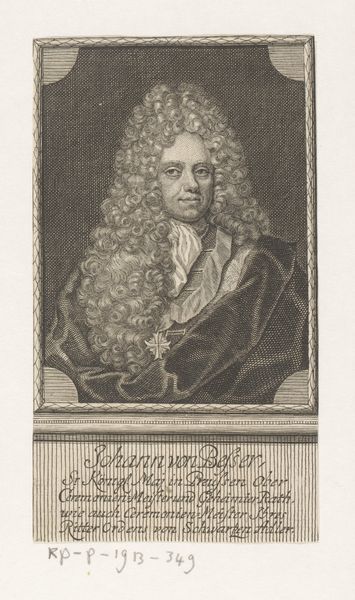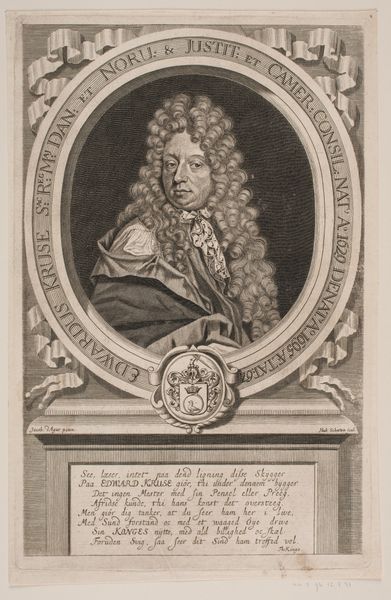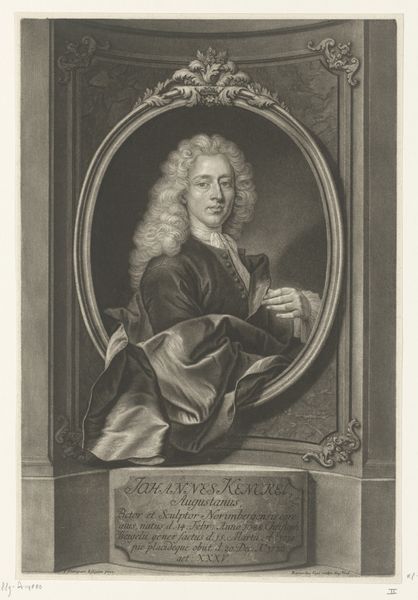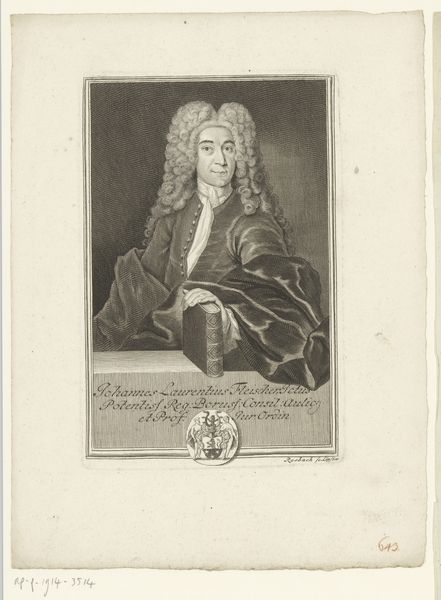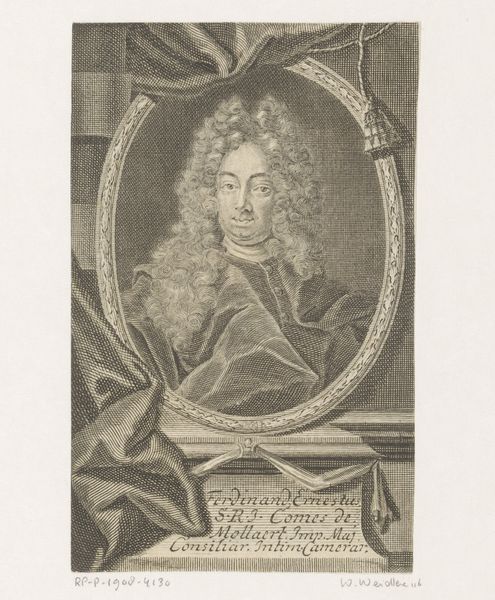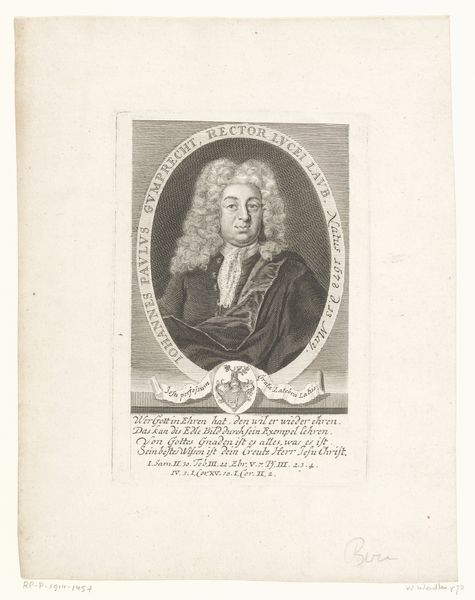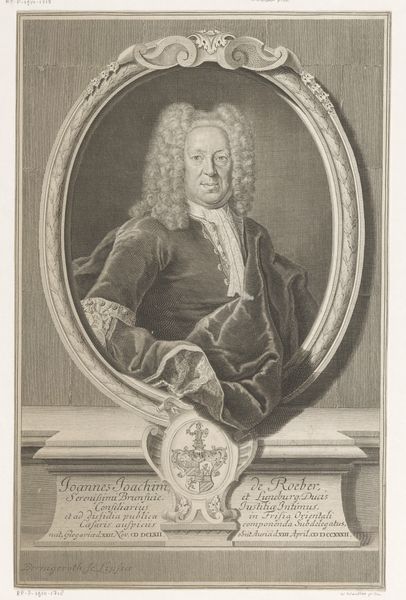
Portret van Friedrich von Hessen-Kassel, koning van Zweden 1720 - 1751
0:00
0:00
martinbernigeroth
Rijksmuseum
metal, engraving
#
portrait
#
pencil drawn
#
baroque
#
metal
#
pencil drawing
#
line
#
portrait drawing
#
history-painting
#
engraving
Dimensions: height 146 mm, width 90 mm
Copyright: Rijks Museum: Open Domain
Curator: Oh, look at this fascinating engraving! It's a portrait of Friedrich von Hessen-Kassel, King of Sweden, dating sometime between 1720 and 1751. The artist is Martin Bernigeroth. What strikes you first? Editor: The sheer density of line work. It’s like looking at a topographical map etched onto metal. I find it simultaneously opulent and kind of… ghostly? Like a king fading into the textures of power. Curator: That ghostly feeling is interesting. The formal elements are pretty conventional for a royal portrait of the Baroque era: the elaborate wig, the armour, the heavy drapery. The engraving almost makes those symbols heavier somehow, weightier. Editor: Exactly. The portrait itself, framed within this heavy oval, evokes this tension for me. On one hand, here is Frederick represented as a figure of military strength and a monarch. However, look at his slightly tilted head, and the subtle softness of the facial features; he seems almost caught off guard, or made to be an unsure subject, in spite of everything he’s wearing. It begs the question: What’s the role of the artist? Is the work meant to be subtly critical of elitism or monarchy in the grand scheme? Curator: You know, maybe. I was thinking about the material itself. Engraving is such a deliberate process, a painstaking accumulation of tiny marks. It makes me wonder about the labor involved, about Bernigeroth’s hand and eye meticulously recreating an image of power. Does the process become a metaphor? Or does the artistic precision glorify its powerful subject? Editor: That’s a crucial point. The material reality and the technical skills always bring an interesting tension to a work like this. Thinking about context, consider Sweden's shifting power dynamics during this period. Images were meticulously crafted to establish status—which becomes more potent as it also embodies political or military unease. And if portraits reinforce status, it might be reasonable to suppose Bernigeroth wanted to secure and further entrench their future, not question it. Curator: It's this fascinating push and pull between artistic intention, historical forces, and, of course, our contemporary interpretations that makes engaging with works like this so rewarding. It reminds us that portraits are never just simple likenesses; they're dense with meaning and possibility. Editor: Absolutely, I am intrigued. So many stories hidden in the lines!
Comments
No comments
Be the first to comment and join the conversation on the ultimate creative platform.





